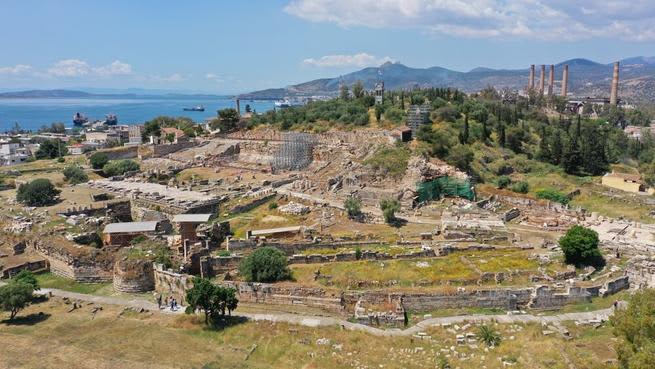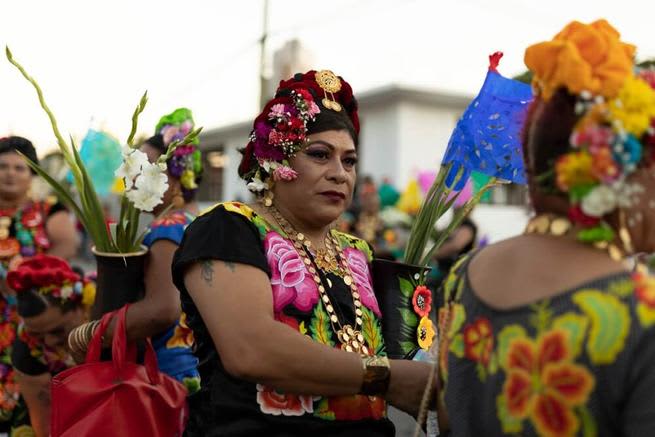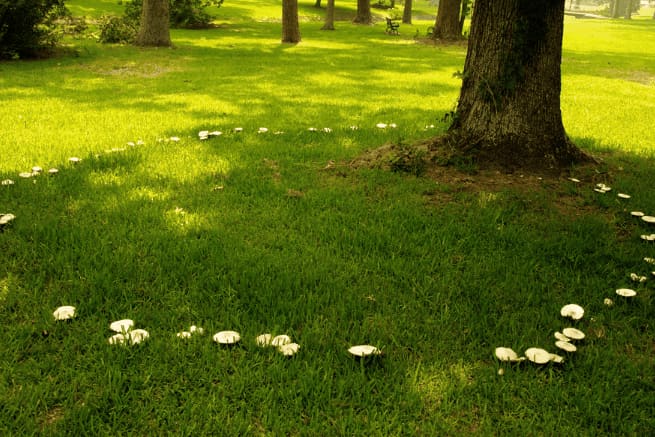

Throughout history, mushrooms have been revered for their spiritual significance across the globe. From the civilizations of ancient Greece to the modern Western counterculture, psychedelic mushrooms have significantly influenced religious ceremonies, divination, and spiritual exploration.
Many cultures have regarded mushrooms as a bridge between real life and the spirit world. Consuming them was believed to facilitate communication with the divine. The spiritual meaning of mushrooms remains prevalent today, as several cultures continue to exploit their hallucinogenic effects and healing medicinal properties.
The role of mushrooms in Mesoamerican religion and rituals

Magic mushrooms, particularly those of the Psilocybe genus, held a critical role in the religious and spiritual life of ancient Mesoamerican civilizations, most notably Aztec and Maya cultures. These groups used mushrooms not only as a tool for healing but also as a gateway to spiritual insights and divine communication.
The term Teonanácatl, which translates to “flesh of the gods,” was used by the Aztecs to describe these sacred mushrooms. Recent research, including the analysis of ancient artifacts, has provided deeper insights into how psychedelic mushrooms were integrated into early ceremonial practices (1). During significant religious ceremonies and feasts, the consumption of Teonanácatl was believed to cause mystical experiences and communication with the gods, which played a major role in decision-making and ceremonial healing. These mushrooms were also used in traditional medicine by healers to treat different physical and mental ailments, suggesting an advanced understanding of their pharmacological properties that modern science is just now uncovering for itself.
This deep connection to psychedelic mushrooms was often mirrored in the elaborate iconography of Mesoamerican art. Mushrooms were often depicted as sacred objects held by gods or consumed by priests, offering evidence to support the hypothesis that mushrooms were an integral part of these civilizations’ theological and philosophical ideologies.
Greek and Roman use of mushrooms in the Eleusinian Mysteries

The Eleusinian Mysteries were a major religious festival in ancient Greco-Roman culture, centered around an obscure ritual held annually at the sacred city of Eleusis. An essential part of this event was consuming a concoction known as kykeon, which was required to initiate participants. Composed of barley and a mint-like herb called pennyroyal, modern scholars propose this beverage may have contained psychedelic substances as well. Researchers speculate that ergot, a fungus that grows on barely and contains LSD-like compounds, was purposefully added to induce visions. Alternatively, some researchers propose that kykeon may have included psilocybin mushrooms or DMT-bearing plants, though the evidence for these ingredients is less definitive.
Participants of the ceremony would embark on a symbolic ten-day journey from Athens to the temple of Demeter in Eleusis. Along the way, they engaged in fasting and purification rituals. Yet the climax of this journey was the ritualistic drinking of kykeon, which was believed to facilitate the mystical experience of death and rebirth. This act was thought to dissolve any fears of death and allow participants to become closer to the deeper truths of existence.
The Eleusinian Mysteries are believed to have influenced many key philosophical figures of ancient Greece and could have indirectly impacted early Christian mystical practices. While the Eleusinian Mysteries declined after the rise of Christianity and the Roman imperial rulings against pagan rituals, the legacy of these rituals continues to intrigue scholars and spiritual seekers alike.
Mushrooms and shamanism in Siberian, Tungusic, and Samoyedic cultures

The Fly Agaric mushroom (Amanita muscaria) has a long history in the shamanic traditions of Siberian, Tungusic, and Samoyedic cultures. This mushroom was not just used for its hallucinogenic properties but also as a spiritual conduit for accessing the unseen layers of reality.
Unlike typical psychedelic mushrooms, the Fly Agaric does not contain psilocybin but instead active compounds ibotenic acid and muscimol. These compounds interact with the body differently than those of traditional shrooms, yet they can still lead to altered states of consciousness and hallucinations. These altered states were essential for Siberian shamans, who used them to engage with the spirit world. The consumption of this mushroom was typically preceded by various ritualistic preparations such as fasting, isolation, and the wearing of ceremonial garments, believed to purify the shaman and enhance the mushroom’s spiritual effects (2). These mushrooms also have cultural significance, as they are woven into the folklore and traditions of these communities. For example, the Tungsic and Samoyed people hold the mushroom in high esteem and have folklore and mythologies rich with references to mushrooms. These cultures believed that mushrooms, especially the Fly Agaric, could act as mediators between the natural world and the spiritual realm, providing them with the ability to understand hidden wisdom, communicate with ancestral spirits, interpret dreams, and even see into the future (3).
Mushroom symbolism in modern indigenous cultures
In modern indigenous cultures, mushrooms hold a deep spiritual significance that links back to ancient times and is found in many cultures worldwide. In these cultures, individuals consume psychedelic mushrooms for spiritual practices and rituals to communicate with the spiritual world.
Mushrooms in African cultures and religions

One of the first records indicating hallucinogenic mushrooms comes from the Yoruba tribe of Nigeria and many other recorded historical instances throughout the continent of Africa (4). Due to the effects of colonialism, much of the passed-down oral history regarding mushrooms has been lost, leaving only a few elders who’ve retained some remaining cultural knowledge. Many of these traditions may still be practiced today, undocumented by smaller tribes and different cultural subgroups that have not yet been thoroughly studied.
Ethnomycological research, although sparse, suggests that in places in the Ivory Coast, mushrooms such as Tamu (known as the “mushroom of knowledge”) and an unnamed species referred to as the “mushroom of action” are still used in spiritual practices today. These mushrooms are administered by traditional healers who assist individuals in spiritual quests to overcome fears and achieve personal renewal.
Mushrooms in Mexican cultures and religions

In Mexico, the use of psychedelic mushrooms has deep roots, particularly amongst the Mazatec people of Oaxaca. This group is known for their continued use of Psilocybe mushrooms for both healing and divinatory practices. The ritual often begins with a purification process, including fasting and isolation, followed by the ceremonial consumption of the mushrooms led by a shaman or curandero. This process is believed to facilitate spiritual communication and healing. Small villages in the Sierra Mazatec region still uphold these traditions, using local varieties of psychedelic mushrooms for rituals meant to clean the spirit and heal the body.
Mushrooms in North American cultures and religions

Image Source: Evan Paunde
In North America, several Native American tribes regard mushrooms with great reverence, viewing them as powerful spiritual symbols and medicinal resources. Despite legal restrictions, these practices exist within communities that maintain their ancestral knowledge.
The Ajumawi tribe of the Mount Shasta Region in California, for example, uses the Amanita pantherina (Panther Cap mushroom), closely related to the more widely known Amanita muscaria (5). These mushrooms are important for their religious ceremonies, where shamans consume them to achieve heightened spiritual states. This practice allows them to perceive and interact with the spirits of patients and the natural world around them, allowing them a spiritual connection with inanimate objects like trees, mountains, and water.
Mushrooms in European culture and folklore

Ireland
In Irish folklore, mushrooms, particularly those that form fairy rings, are often associated with magical properties and are closely tied to the Celtic myth of fairies. These rings are circles of mushrooms that appear in grassland, and according to legend, they are believed to be the dancing grounds for fairies and a portal to their world. It is thought that disturbing a fairy ring could bring misfortune since it disrupts the fairy’s activities.
Germany
German folk tales frequently incorporate mushrooms, especially toadstools, as mysterious and hidden forest elements. The image of toadstools, with their classic red caps dotted with white spots, is a common motif in fairy tales involving witches, gnomes, and other woodland spirits. Fairy rings also appear in German stories, referred to as Hexenkreis, which are believed to be a portal to the spirit realm. However, instead of being created by dancing fairies, they are caused by witches.
France
In French folklore, fairy rings are known locally as ‘ronds de sorcières’ or witches’ circles. These formations are often considered the sites of witch gatherings or gateways into enchanted realms. The lore surrounding mushrooms in France is intertwined with broader European themes of mysticism and the elemental power of the earth, reflecting their enduring fascination with the mysterious and often unseen forces that govern the natural world.
Mushrooms in Asian cultures and religions

Psychedelic substances like mushrooms are taboo in many Asian countries due to stigmatization and laws. Regardless, several different cultures throughout Asia use entheogens to alter their consciousness and praise functional mushrooms for their proposed spiritual and health benefits.
China
Mushrooms hold deep spiritual and medicinal value in Chinese culture because of their perceived health benefits and mythical qualities. One of the most respected mushrooms in Chinese tradition is the Reishi (Ganoderma lucidum), known as “Lingzhi” in Chinese. Often referred to as the “mushroom of immortality,” reishi is featured extensively in art, literature, and spiritual practices as a representation of health, longevity, and spiritual enlightenment. Reishi is believed to enhance one’s vital life force, or Qi, making it a frequent subject in Taoist texts, where immortality is a consistent theme.
Taoism is deeply rooted in respect for nature and focuses on the balance of yin and yang energies in the body. Mushrooms with medicinal properties are considered potent aids for this balance, helping to refine and cultivate Qi. They are often used in Taoist herbal medicine practices to promote physical health and spiritual well-being due to the belief in the interconnectedness between the two.
Mushrooms also play a critical role in traditional Chinese medicine (TCM), which is used to treat a wide array of health issues, from boosting the immune system to managing stress and fatigue. These treatments aren’t simply viewed as cures for physical ailments but as essential components of holistic well-being, integrating the mind, body, and spirit.
India

Mushrooms have held great significance in several Hindu schools of thought. An ancient collection of Sanskrit hymns called Rigveda mentions a beverage called Soma, which is made from Amanita muscaria mushrooms. Soma is used for improved meditations and spiritual visions and is consumed during ritualistic ceremonies.
Similarly, mushrooms held a vital role in early Buddist initiations, most notably in Vajrayana Buddhism, with several scriptural accounts of psychedelic use (6). Of course, not all Buddhists use mind-altering substances as a part of their practice, but it is important to note that psychedelic mushrooms still hold importance to many modern Buddhists. Buddhism and psychedelic spirituality have recently boomed in several parts of the world, as some argue that hallucinogens provide similar spiritual effects to meditation.
In a survey published by the Indian Journal of Psychiatry, 30.6% of Indian participants reported using psychedelics for “medication/spiritual reasons” (7). Today, a town in India called Kodaikanal is becoming increasingly popular for those searching for a spiritual journey.
Locals have traditionally used psychedelic mushrooms for centuries, but many people have flocked to the town in search of shrooms to alter their consciousness. Though historical evidence gives us a clearer idea of cultural mushroom use in India, psychedelic mushrooms are still used for spiritual development.
Mushrooms in modern Western culture

In Western culture, mushrooms have been popularized as a means of spiritual exploration and psychedelic therapy. The counterculture movement of the 1960s saw a resurgence of interest in the spiritual properties of magic mushrooms. This growth of intrigue was largely credited to scientific researchers.
For instance, Timothy Leary advocated for the use of mushrooms as a tool for spiritual and psychological growth. However, indigenous Mexican knowledge guided Leary’s studies through their generous sharing of ancient wisdom. Cultural healers in rural Mexican villages heavily influenced scientists in the 60s and 70s because of the medicinal knowledge they passed down to visitors.
Eating mushrooms for spiritual exploration and psychedelic therapy continues to be popular today. Research into the therapeutic potential of psychedelics has been gaining momentum in recent years. In addition, several religions and spiritual retreats use hallucinogens like mushrooms to gain more insight and resolve inner turmoil.
The ongoing significance of mushrooms in spiritual practices across cultures
Mushrooms have held profound symbolic meaning across diverse cultures and historical periods, frequently featuring in religious rites, divinatory practices, and spiritual journeys. In many cultures today, mushrooms symbolize new beginnings and are often associated with renewal, growth, and good luck. Whether appearing in dreams or natural settings, mushrooms embody the promise of fresh starts and new opportunities.
Mushrooms are also integral to spiritual practices in many traditions, used as catalysts for achieving altered states of consciousness. Through these experiences, individuals can explore deeper aspects of themselves and their spirituality to gain insights into the mysteries of existence.
Their persistent symbolism of mushrooms are a reminder of life’s cyclical nature and the ongoing human pursuit of healing and connection within the broader fabric of existence.
References
- Carod-Artal, F.J. 2015. “Hallucinogenic Drugs in Pre-Columbian Mesoamerican Cultures.” Neurología (English Edition) 30 (1): 42–49. https://doi.org/10.1016/j.nrleng.2011.07.010**.
- Petri. 1992. “Religious Use of Hallucinogenic Fungi: A Comparison between Siberian and Mesoamerican Cultures | Karstenia.” The Journal of the Finnish Mycological Society. November 24, 1992. https://karstenia.fi/religious-use-of-hallucinogenic-fungi-a-comparison-between-siberian-and-mesoamerican-cultures/.
- Saar, Maret. 1991. “Ethnomycological Data from Siberia and North-East Asia on the Effect of Amanita Muscaria.” Journal of Ethnopharmacology 31 (2): 157–73. https://doi.org/10.1016/0378-8741(91)90002-U.
- Oyetayo, Olusegun. 2011. “Medicinal Uses of Mushrooms in Nigeria: Towards Full and Sustainable Exploitation.” African Journal of Traditional, Complementary and Alternative Medicines 8 (3). https://doi.org/10.4314/ajtcam.v8i3.65289**.
- Buckskin, Floyd, and Arlene Benson. 2005. “The Contemporary Use of Psychoactive Mushrooms in Northern California.” Journal of California and Great Basin Anthropology 25 (1). **https://escholarship.org/uc/item/4qr081cm**.
- Winkelman, Michael James. 2021. “Entheogens in Buddhism.” Journal of Psychedelic Studies 5 (1). https://doi.org/10.1556/2054.2020.00161**.
- Raj, Gokul. 2022. “Jul-Aug 2022 - Volume 64 - Issue 4 : Indian Journal of Psychiatry.” Journals.lww.com. July 2022. https://journals.lww.com/indianjpsychiatry/Fulltext/2022/64080/Psychedelic_use_in_India**.


